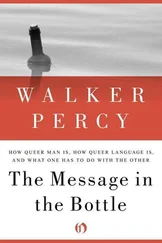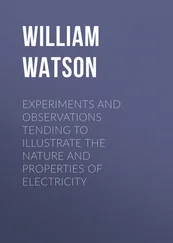Mark Changizi - Harnessed - How Language and Music Mimicked Nature and Transformed Ape to Man
Здесь есть возможность читать онлайн «Mark Changizi - Harnessed - How Language and Music Mimicked Nature and Transformed Ape to Man» весь текст электронной книги совершенно бесплатно (целиком полную версию без сокращений). В некоторых случаях можно слушать аудио, скачать через торрент в формате fb2 и присутствует краткое содержание. Год выпуска: 2011, Издательство: Perseus Books Group, Жанр: Старинная литература, на английском языке. Описание произведения, (предисловие) а так же отзывы посетителей доступны на портале библиотеки ЛибКат.
- Название:Harnessed: How Language and Music Mimicked Nature and Transformed Ape to Man
- Автор:
- Издательство:Perseus Books Group
- Жанр:
- Год:2011
- ISBN:нет данных
- Рейтинг книги:5 / 5. Голосов: 1
-
Избранное:Добавить в избранное
- Отзывы:
-
Ваша оценка:
- 100
- 1
- 2
- 3
- 4
- 5
Harnessed: How Language and Music Mimicked Nature and Transformed Ape to Man: краткое содержание, описание и аннотация
Предлагаем к чтению аннотацию, описание, краткое содержание или предисловие (зависит от того, что написал сам автор книги «Harnessed: How Language and Music Mimicked Nature and Transformed Ape to Man»). Если вы не нашли необходимую информацию о книге — напишите в комментариях, мы постараемся отыскать её.
Harnessed: How Language and Music Mimicked Nature and Transformed Ape to Man — читать онлайн бесплатно полную книгу (весь текст) целиком
Ниже представлен текст книги, разбитый по страницам. Система сохранения места последней прочитанной страницы, позволяет с удобством читать онлайн бесплатно книгу «Harnessed: How Language and Music Mimicked Nature and Transformed Ape to Man», без необходимости каждый раз заново искать на чём Вы остановились. Поставьте закладку, и сможете в любой момент перейти на страницу, на которой закончили чтение.
Интервал:
Закладка:
These acoustical observations about how the surroundings affect sound have an important consequence for the internal structure of rings: rings can be wiggly. There are several converging reasons for this. First, an event that causes a ring often also sets the ringing object in motion: something has been hit, or something is sliding. Because the shape of a ring reaching one’s ears depends on the object’s surroundings, ringing objects that are moving produce rings that vary over time. Second, when an event occurs, we are often on the move. Because the shape of the ring we receive depends, in part, upon our position in the world, the shape of the ring reaching our ears may be varying over time. In each case, whether we are moving or the object is, the timbre of a ringing object can change, and these are wiggles we notice, at least subconsciously. In addition to such dynamic changes in the subtleties of a ring’s timbre, there is another dimension in which rings can often vary: pitch, the musical-note-like “higher” or “lower” quality of sound. When motion is involved—either our own motion or that of the objects involved in events—we get Doppler shifts, a phenomenon we are all familiar with, as when a car approaching you sounds higher-pitched than when it is moving away. (See also the later section of this chapter titled “Unresolved Questions” for more about the Doppler effect and its stamp upon speech. And see the following chapters on music, where the Doppler effect will be discussed in detail.)
Rings can therefore change over time, both in timbre and in pitch. That is, a single ring can often be intrinsically dynamic. What about hits and slides?
Hits are nearly instantaneous, and for this simple reason they cannot change over time, at least not in the sense of continuously varying from one kind of hit to another. Hits can, of course, happen in quick succession, such as when you drop a pen and one end hits an instant before the other. But such a pen event would be two physical interactions, not one. Unlike a single ring, which can wiggle, a single hit has no wiggle room.
How about slides? Slides can occur for a lot longer than an instant, and so they can, in principle, dynamically vary over their occurrence. Although slides can be long—for example, a single snowy hill run on a sled may be one continuous slide—they are much more commonly short (though not instantaneous) in duration, because they quickly dissipate the energy of an event, sometimes ending it. Do the sounds of slides ever, in fact, dynamically vary over time? Before answering this, let’s be clear on what we mean by the sound of a slide. A slide can cause a ring, as we have discussed, but that is not what we’re interested in at the moment. We are, instead, interested in the sound made by the physical interaction of the two sliding surfaces—the noisy friction sound itself, caused by the coarseness of the objects involved. Therefore, to produce a wiggly slide, the coarseness of the surface being slid upon would have to vary, so that one friction sound would change gradually to another friction sound. Although coarseness varies randomly on lots of materials, few objects vary in a systematic, graded fashion, and thus slides will tend to have a rather nonvarying sound.
Rings, then, can be wiggly. But not hits, and not slides. If language has culturally evolved to sound like nature, then we would expect that sonorant phonemes (language’s rings) would sometimes be dynamically varying, but not plosives (language’s hits) or fricatives (language’s slides).
Languages do, indeed, often have sonorants that vary during their utterance. Although vowels like those in “sit” and in “set” are nonvarying, some vowels do vary, like those in “skate” and “dive.” When one says “skate,” for example, notice how the vowel sound requires your mouth to vary its shape, thereby dynamically modulating its timbre (in particular, modulating something called the formant structure , where formants are the bands of frequencies emanating from a sonorant). Vowel sounds like these are called diphthongs. Furthermore, sonorant consonants like l , r , y , w , and m demand ring changes. For example, when you say “yet,” notice how during the “y” your mouth dynamically varies its shape. These sonorants incorporate timbre changes. Recall that rings in nature also can change in pitch due to the Doppler effect. Do we find something like the Doppler shift in sonorant phonemes? Yes, in fact, in the many tonal languages of the world (such as Chinese), where vowels may be distinguished from one another only by virtue of how they dynamically vary their pitch during their utterance.
Whereas sonorants are commonly wiggly, effectively making more than one ringing sound during their utterance, no language possesses phonemes having in them more than one hit sound. It is possible in principle to have a single phoneme that sounds like two hits in very quick succession—for example, the “ct” in “ectoplasm”—but while we can make such sounds, and they even occur in language, they are never given building-block, or phoneme, status.
Are language’s slides like nature’s slides in being non-wiggly? First, let’s be clear on what it would even mean to have a fricative that varies dynamically as it is spoken. Try saying the sound “fs.” That is, begin with an “f” sound, and then slowly morph it to become “s” at the end. You make this sound when, for example, you say “puffs.” Languages could, in principle, have fricative phonemes that sound like “fs.” That is, languages could possess a single phoneme that has this complex dynamic fricative sound, just as languages possess single sonorant phonemes that are dynamic. One does not, however, find phonemes like this among human languages.
Nature’s rings are wiggly but hits and slides are not, and culture has given us language with the same wiggles: language commonly has sonorant phonemes that dynamically vary, but does not have plosive or fricative phonemes that dynamically vary. Our auditory systems are happy with dynamic rings, but not with dynamic hits or slides, and culture has given us speech that conforms to these tastes.
In addition to looking at dynamic changes within phonemes, we can make similar observations at the level of how phonemes combine into words: languages commonly have words with multiple sonorants in a row, but more rarely have multiple plosives or multiple fricatives in a row. For example, consider the following English words, which I found by perusing the second paragraph of this chapter: “harrowing” possesses six sonorants in a row (a, rr, o, w, i, and ng, the latter of which is a nasal sonorant), “village” has three in a row, “generation” has five in a row, and “eventually” has four in a row. One can find adjacent plosives, like in “packed” (“kt”) and “grabbed” (“bd”), and one can find adjacent fricatives like in “puffs” (“fs”), “gives” (“vz”), and “isthmus” (“sth”), but finding more than two in a row is difficult, and five or six in a row is practically impossible.
We now know how, and how much, each of the three kinds of “event atoms” can vary in sound while they are occurring. We have not, however, considered whether an event of one of these three kinds can ever dynamically change into another kind of event. Could some simple event pairs be so common that we are likely to possess special auditory mechanisms for their recognition, mechanisms language harnesses? We turn to this question next, and uncover a kind of event sufficiently fundamental in physics that it is also found as a fourth kind of phoneme in language.
Nature’s Other Phoneme
I have been treating hits and slides as two different kinds of physical interaction. But slides are more complex than hits. This is because slides consist of very large numbers of very low-energy hits. For example, if you rub your fingernail on this piece of paper, it will be making countless tiny collisions at the microscopic level. Or, if you close this book and run your fingernail over the edges of the pages of the book, the result will be a slide with one little hit for each page of the book. But it would not be sensible to conclude, on this basis, that there are just two fundamental natural building blocks for events—hits and rings—because describing a slide in terms of hits could require a million hits! We still want to recognize slides as one of nature’s phonemes, because slides are a kind of supersequence of little hits that is qualitatively unlike the hits produced when objects simply collide.
Читать дальшеИнтервал:
Закладка:
Похожие книги на «Harnessed: How Language and Music Mimicked Nature and Transformed Ape to Man»
Представляем Вашему вниманию похожие книги на «Harnessed: How Language and Music Mimicked Nature and Transformed Ape to Man» списком для выбора. Мы отобрали схожую по названию и смыслу литературу в надежде предоставить читателям больше вариантов отыскать новые, интересные, ещё непрочитанные произведения.
Обсуждение, отзывы о книге «Harnessed: How Language and Music Mimicked Nature and Transformed Ape to Man» и просто собственные мнения читателей. Оставьте ваши комментарии, напишите, что Вы думаете о произведении, его смысле или главных героях. Укажите что конкретно понравилось, а что нет, и почему Вы так считаете.












